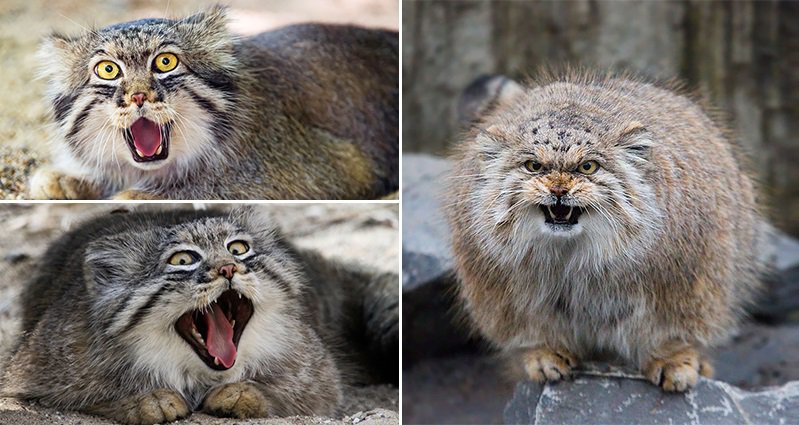tt.”Discover the Enigmatic Majesty of Pallas Cats – The World’s Most Grump-Faced Felines Found in the Western Himalayas”
Discover the Enigmatic Majesty of Pallas Cats: The World’s Most Grump-Faced Felines Found in the Western Himalayas
In the remote and rugged landscapes of the Western Himalayas, a mystical creature roams, capturing the hearts of wildlife enthusiasts and cat lovers alike. The Pallas Cat, also known as the manul, is a marvel of nature, renowned for its distinctive appearance and enigmatic demeanor.
![]()
The Western Himalayas, a region of breathtaking beauty and ecological diversity, provide a unique habitat for these elusive felines. The Pallas Cat, scientifically named Otocolobus manul, thrives in the harsh environments of rocky slopes, high-altitude grasslands, and sparse forests. Its thick fur, designed to withstand the extreme cold, contributes to its distinctive, bushy appearance.
One of the most captivating features of the Pallas Cat is its perpetually grumpy expression. With a flat face, large round eyes, and a distinctively short, stocky body, they seem to wear a perpetual frown. Despite their stern appearance, these cats are a testament to the adaptability and resilience of nature in the face of challenging conditions.

The Pallas Cat’s unique characteristics extend beyond its appearance. Known for their solitary nature, these elusive felines navigate the rugged terrain with remarkable agility. Their solitary lifestyle is a testament to their ability to survive in environments where resources are scarce. Despite their elusive nature, researchers and wildlife enthusiasts have increasingly sought to understand and appreciate these mysterious creatures.
The Pallas Cat’s diet primarily consists of small mammals such as pikas, rodents, and birds. Their hunting prowess is aided by keen senses and sharp retractable claws. However, their nomadic lifestyle and solitary habits make them a rare sight, adding to the allure of encountering one in the wild.
While the Pallas Cat’s physical characteristics are fascinating, their role in the ecosystem is equally significant. As skilled hunters of small prey, they contribute to the delicate balance of the Himalayan ecosystem. Understanding and protecting these elusive felines is crucial for maintaining the biodiversity of the region.

Conservation efforts in the Western Himalayas focus not only on preserving the Pallas Cat but also on raising awareness about the unique challenges they face. Human encroachment, climate change, and poaching pose threats to their already limited habitats. Researchers and conservationists collaborate to implement strategies that ensure the coexistence of these majestic creatures and the local communities.
Photographers and filmmakers have ventured into the Western Himalayas to capture the mystique of the Pallas Cat. Documentaries and photo exhibitions showcase the beauty of these grumpy-faced felines, raising awareness about their conservation needs. The captivating images of Pallas Cats against the backdrop of the Himalayan landscape inspire a sense of awe and appreciation for the biodiversity of the region.
In conclusion, the Pallas Cat stands as a symbol of resilience and adaptability in the face of challenging environments. Their grumpy demeanor and unique characteristics have captivated the imagination of those fortunate enough to encounter them in the Western Himalayas. As we continue to discover the enigmatic majesty of Pallas Cats, it becomes increasingly clear that their conservation is not just about protecting a species; it is about preserving the delicate balance of a truly remarkable ecosystem.
